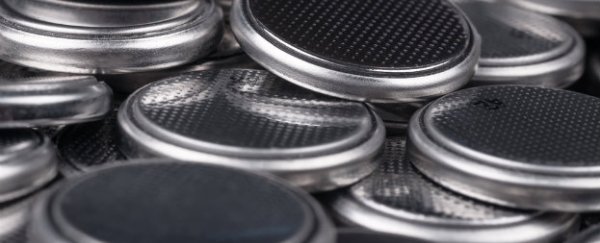Every year, thousands of children accidentally swallow "button" batteries - the small, disc-shaped batteries that power toys, hearing aids, remote controls and many other devices. When these batteries are swallowed, they interact with water or saliva to create an electric current in the body that produces hydroxide - an ion that causes serious damage to the gut tissue and throat, and sometimes even leads to death.
To help prevent such injuries, researchers from the Brigham and Women's Hospital in the US have developed a new coating for batteries that stops them from conducting electricity after being swallowed.
"To date, there has been no innovation to address this issue with small batteries," said one of the team, engineer Jeff Karp, in a press release. "To address this challenge we sought to develop something that would render the battery inert, specifically when it was outside of a device."
The researchers noticed that when batteries are inside a device, they experience a gentle pressure that does not exist when the battery is taken out.
After realising this, they decided to coat the batteries with a quantum tunnelling composite (QTC) - a rubber-like material that is commonly used in touch screens. QTC allows an electric current to pass through it when gentle pressure is applied, but at any other time, the metal particles in the material are too far apart to conduct a current.
"We set out to create a specialised coating that could switch from an insulator to a conductor when subjected to pressure," said Robert Langer, engineer and one of the researchers, in a press release.
To test the material, the team coated one side of the battery with QTC, and then monitored the effect of both coated and uncoated batteries in pigs. As they predicted, the coated batteries caused no damage to the gut tissue of the animals, whereas the uncoated batteries caused burns.
Since QTC is quite cheap, the team is confident that battery companies could easily use this type of coating. The material is also waterproof, meaning that it could potentially be used to make weather-resistant batteries in the future.
The researchers are now working to develop a plan for manufacturing the new batteries, and hope to get them into the hands of eager parents as soon as possible.
The findings are published in the journal Proceedings of the National Academy of Sciences.
Source: EurekAlert
